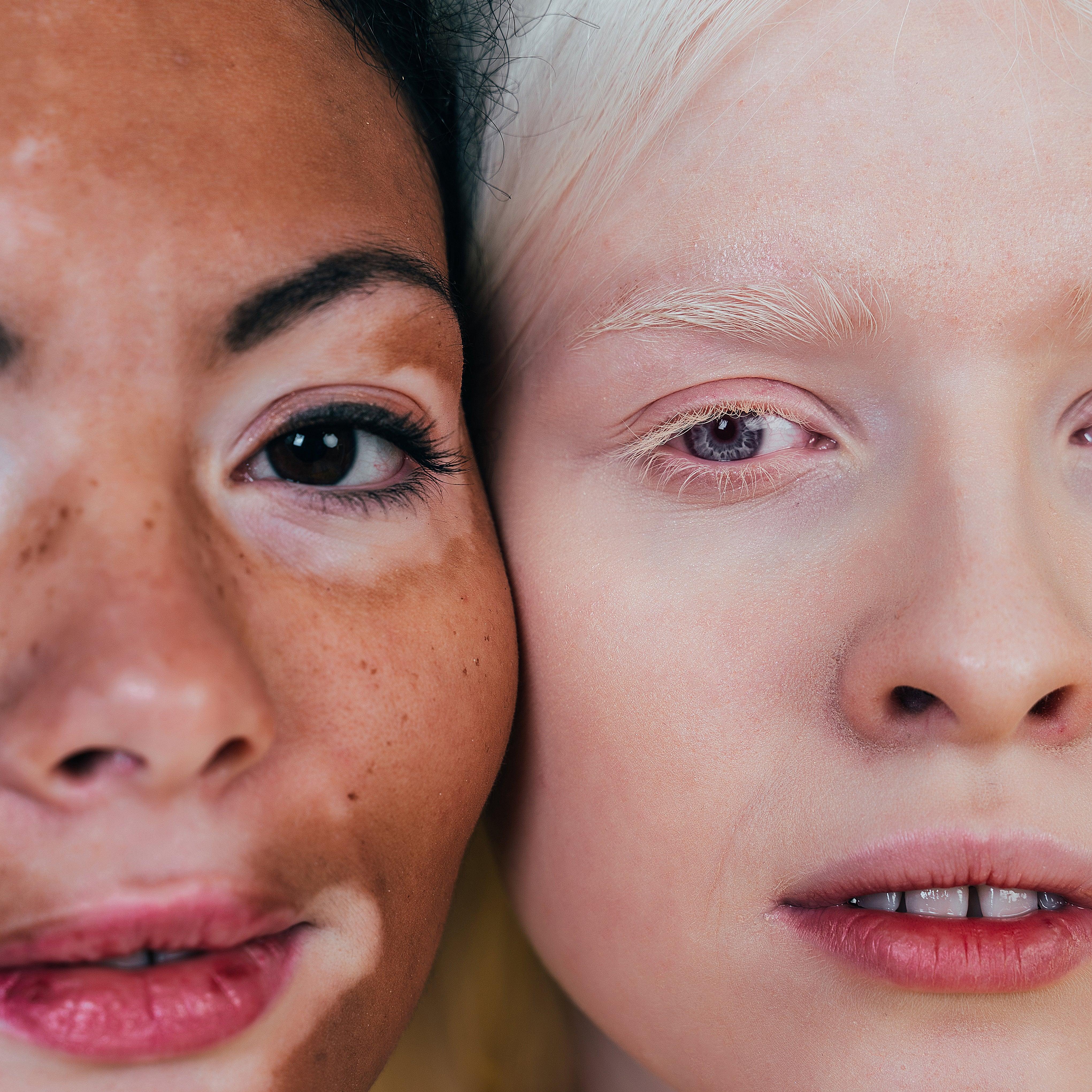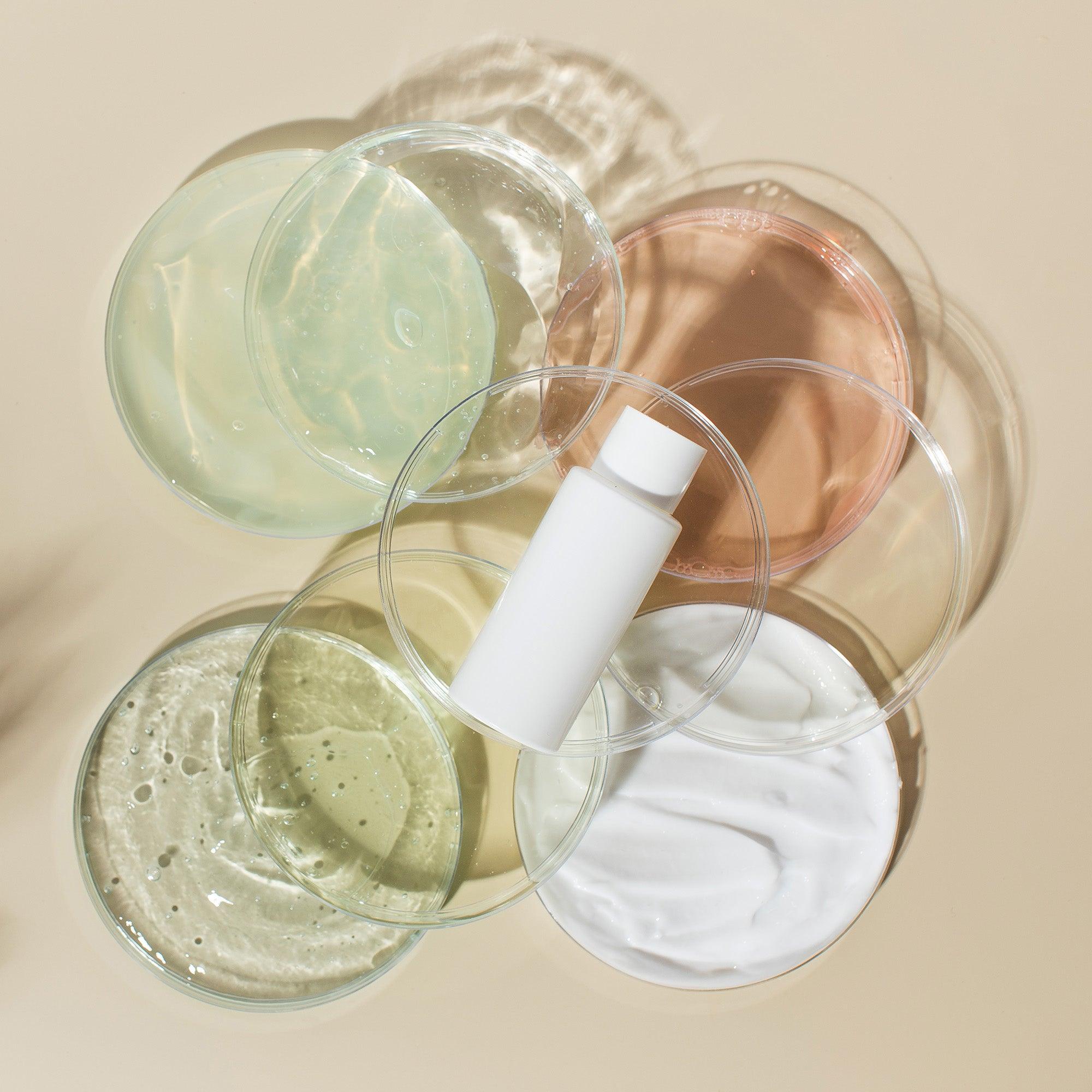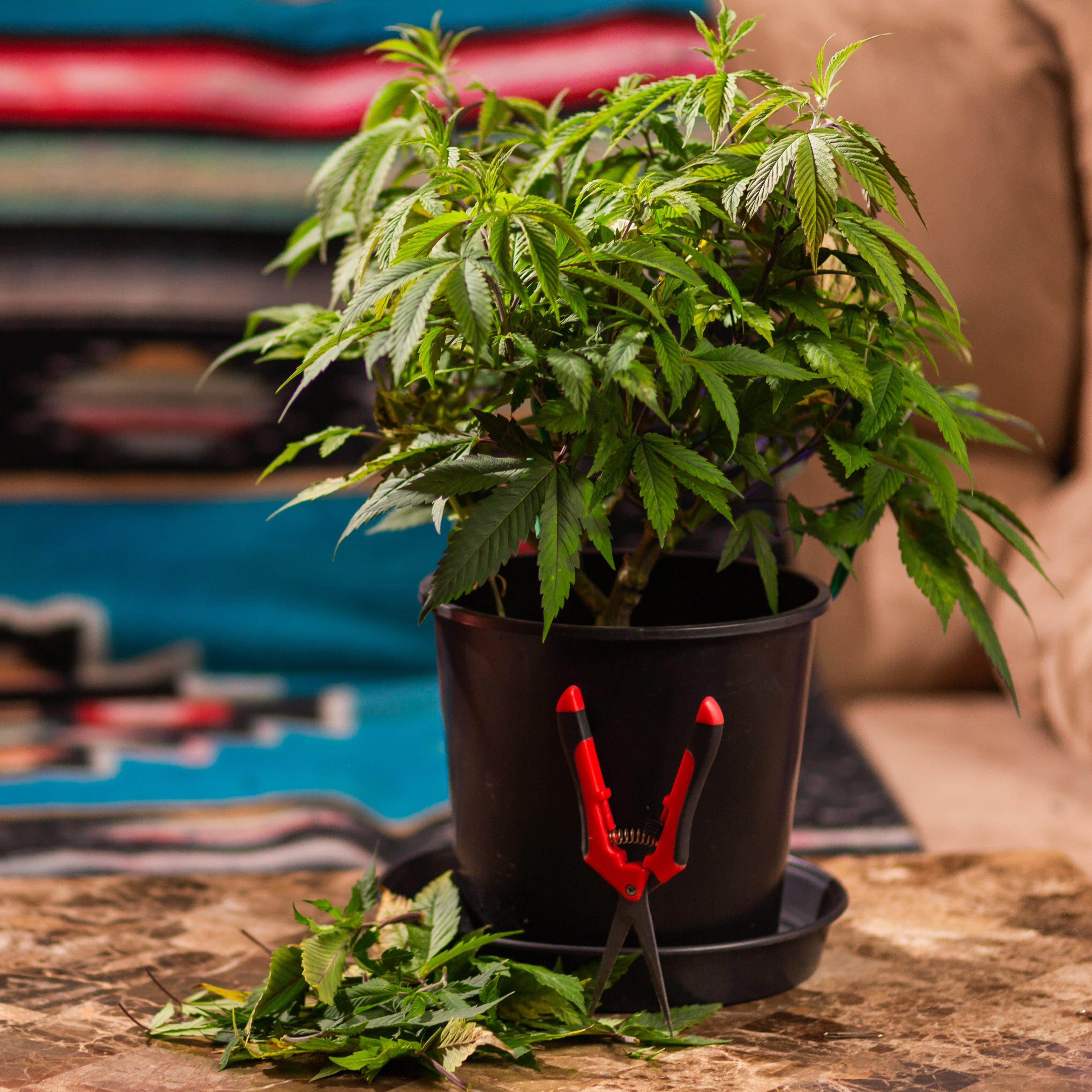Different Skin Types

What Different Skin Types Are There? Should We Really Call Them Skin Types?
Skin therapists, dermatologists, and other professionals in the skincare and beauty industry have long discussed five different skin types. These are:
1. Oily Skin
2. Combination Skin
3. Dry Skin
4. Normal Skin
5. Sensitive Skin
However, in our opinion, this oversimplifies the reality of skin health. The truth is that there are almost as many different skin types as there are people in the world. The skin is a complex ecosystem made up of microbes, signaling systems, and skin cells that work together for proper function. Therefore, we would prefer to replace the term "skin types" with "skin conditions."
An imbalance in this sensitive ecosystem of building blocks can lead to a variety of consequences. The skin can produce too much sebum (becoming oily), produce too little hyaluronic acid (becoming dry), or have an imbalanced microbial diversity, resulting in certain oily areas combined with certain dry patches.
Below, I will briefly describe what is typically attributed to the five skin conditions mentioned above. Then, I will go through some specific reasons why these five different skin conditions arise.
Overview of the Five Skin Conditions:
- Dry Skin:
Characteristics: Dry skin often feels tight, especially after washing, and may tend to flake or be rough. It usually lacks luster.
Causes: Caused by a lack of natural oils and moisture. Can be aggravated by cold or dry climates, hot water, and certain skincare products.
- Oily Skin:
Characteristics: Oily skin has a shiny surface, especially in the T-zone (forehead, nose, and chin). Pores are often larger and can easily become clogged, leading to acne.
Causes: Overproduction of sebum (the skin's own oil), which can be due to genetic factors, hormonal changes, stress, or other lifestyle factors.
- Combination Skin:
Characteristics:** Combination skin has both dry and oily areas. Usually, the T-zone is oily, while the cheeks may be dry or normal.
Causes: A combination of factors affecting both dry and oily skin.
- Normal Skin:
Characteristics: Normal skin is neither too dry nor too oily. It has an even texture, fine pores, and few spots or blemishes.
Causes: Good balance of moisture and sebum production.
- Sensitive Skin:
Characteristics: Sensitive skin reacts easily to external factors and may become red, itchy, or irritated. It can also feel burning or tight.
Causes: Can be due to genetic factors, skin conditions such as eczema or rosacea, or reactions to certain ingredients in skincare products.
Regardless of whether you have any of the above skin conditions or something in between, they all fundamentally result from the same issue: an imbalance in the skin's ecosystem. The natural functions of the skin have stopped working properly, resulting in a "non-natural function."
Some of the Main Reasons for This Imbalance Are:
- Stress:
Stress is one of the primary factors that can cause our skin's combination of building blocks to become imbalanced. When we are stressed, the body goes into "defense mode," where the skin's functions are deprioritized. Chronic stress almost always leads to poorer skin health.
- "Non-Living Food":
By this, I don't mean that one should eat more living food in terms of animals. When I refer to living food, I mean microbially alive food. Eating freshly harvested vegetables directly from the ground is an excellent solution. If that isn't possible, naturally fermented sauerkraut or kimchi are also great alternatives. A couple of tablespoons per day is sufficient to increase the chances of good skin health.
- Skincare Products:
We must face the facts. Skincare and beauty products have, over the last 120 years, harmed our skin in ways that are hard to imagine. The idea of achieving short-term results by stressing the skin, creating damage, and applying substances that should not naturally be there is, and has always been, a very bad idea. Stop using skincare that does not benefit the skin's ecosystem.
- Lack of Sleep:
Insufficient sleep means the body lacks the energy or time to provide the skin with the recovery it needs. Aim for 8-9 hours of uninterrupted sleep each night (even though that can sometimes be challenging).
- Lack of Contact with Nature:
Our skin is built to be healthy when we live a hunter-gatherer lifestyle. A person living this traditional lifestyle spent most of their waking hours outdoors in nature year-round. The skin is therefore designed to continuously exchange microbes with plants, trees, and flowers in nature. Try to take time to walk in nature and even take a dip in a nearby lake. Your skin will thank you.
If you want to achieve healthy skin with increased elasticity, firmness, and radiance in both the short and long term, you must care for your skin as it was evolutionarily designed to be treated.
Here, you can read more about our skincare routine for achieving optimal skin health.
Sources:
1. [Springer](https://link.springer.com/article/10.1007/s00248-022-02052-2)
2. [NCBI](https://www.ncbi.nlm.nih.gov/pmc/articles/PMC9690301/)
3. [PubMed](https://pubmed.ncbi.nlm.nih.gov/25266053/)
4. [PubMed](https://pubmed.ncbi.nlm.nih.gov/31692145/)
5. [NCBI](https://www.ncbi.nlm.nih.gov/pmc/articles/PMC8480446/)




Comments